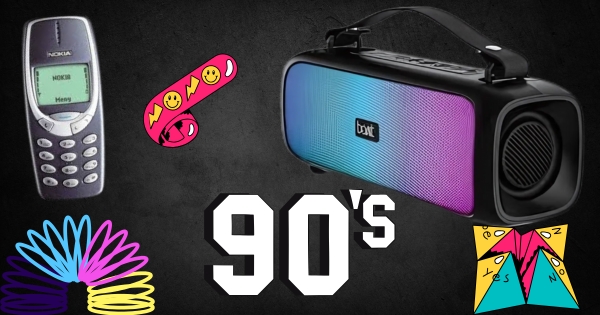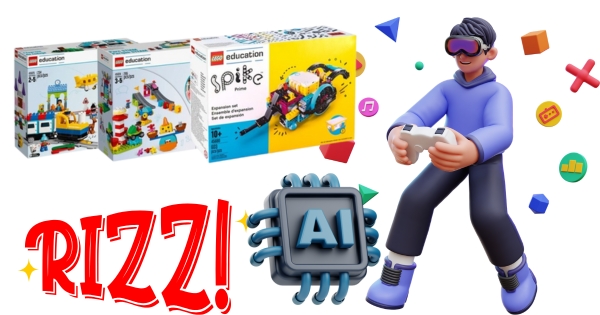Stream? Binge!
Fit? Drip!
Meanwhile babies… Tatatata!
From words to vibes, it’s a whole different world for each generation! Therefore generational marketing strategies should be used depending on the age group the brand caters to. Marketing strategies should be specifically customised to meet the ‘preferences’ or should I say ‘vibe’ of different age groups. Designing for different age groups should be done by understanding their behaviour, values and communication style.
Gen X (1965-1980) values original content and independence, they prefer straightforward marketing. Millennials (1981-1996) values convenience and experience and drive towards brands that offers both. Gen Z (1997-2012) is all about innovation, sustainability and short content like reels and memes and Gen Alpha (2013-present) is growing up with technology in their fingertips and are highly influenced by content creators.
Confused about designing for different age groups or marketing strategies for different generations? Well, in this blog, we will explore generational marketing strategies based on each age group.
Table of Contents
What is generational marketing?
Generational marketing is when the customers or audience of a brand is targeted by generation. Each generation has their own way of thinking and preferences especially when it comes to purchase decisions. To implement generation marketing it’s important to understand how each generation thinks about different products, ads and content.
Generation X: The VHS and Walkman generation (1965-1980)
Generation X is the first generation to experience the digital life while also having one foot in traditional life. They experienced the shift from Walkman to CD. Our home had the first TV in the whole area—your parents probably even mentioned it to you! They have a unique understanding of both worlds as their childhood was mostly analog and their adult life was about digital transformation.
While designing for Gen X, go for a balanced approach between digital and traditional media. Here are a few Gen X marketing tactics:
- Gen X prioritizes value, they want to get the most out of their money. Marketing campaigns should be designed in a way that highlights discounts, benefits and valuable products and content.
- While they don’t use social media as much as Gen Z, they still engage on platforms like Facebook and LinkedIn.
- They love and relate to designs which has nostalgic references. Use retro elements, nostalgic references or even 80s and 90s famous audios like Super Mario bros.

For example, Polaroid re-entered the market with its new line ‘Polaroid Originals’ and effectively used nostalgia to attract its target audience-Gen X. It featured retro-style ads and emphasized the joy and feel of physical photos directly appealing to Gen X’s sense of nostalgia for an era before smartphones and social media.
Millennials: The In-between generation (1981-1996)
Millennials are the ones who grew up with internet and mobile technology. I mean their love for Nokia and its legendary durability can still be seen. They are highly connected, socially aware and value experiences. They care about social issues, authenticity and they are the ones to research everything about the product before making a decision.
If you are going for generational marketing for millennials, here are a few millennial marketing strategies:
- Millennials expect brands to understand their needs so campaigns that offer personalised recommendations are highly effective.
- They are active on platforms like Instagram and YouTube so partnering with influencers who are authentic and who align with your brand will make an impact.
- This generation cares a lot about social issues like climate change, equality and mental health awareness. Showcase your brands commitment to social issues to build a loyal and long lasting audience.

A great example of this is Boat, they target millennials with their trendy and high quality products. Their marketing approach focuses on convenience, affordability and trendy designs. They often collaborate with influencers who resonate with this group.
Generation Z: The it’s all about vibe generation (1997-2012)
The generation that survives on iced coffee, memes and Wi-Fi. Highly tech-savvy and visually driven, this generation prefers short form content like reels and shorts. They often push boundaries and embrace diversity. They are transparent in their actions and care deeply about sustainability and environmental issues.
Here are a few Gen Z generational marketing approaches which will be helpful:
- Gen Z has a short attention span and prefers visual content like images, GIFs and videos more than text. Focus on short format contents and more visually appealing modern designs.
- They like raw and authentic content that is unfiltered. They are active on platforms like Instagram, Snapchat and WhatsApp.
- They drives towards brands who incorporate sustainability and environmental friendly practices. When designing focus on bold, visually striking and sustainable designs.

And Burger King is an amazing example for this, known for their bold, funny and sometimes controversial campaigns they engage Gen Z with humour, sustainability efforts and short-form content. One prime example is their Meme Marketing strategy, where they turned popular internet memes into ads.
Generation Alpha: Born with phones in hand (2013-Present)
If you think Generation Alpha is still young, well they’ve already grown up surrounded by advanced technology…with smartphones in hand and noise-cancelling earphones in their ears. They are expected to be the most technologically advanced generation. Gen alpha is highly connected, engaging with digital platforms and AI from an early age.
Generational marketing and designing for Gen alpha will require forward-thinking and use of latest tools. Well here are a few marketing strategies for gen alpha:
- Generation Alpha will be attracted to interactive content like augmented reality and virtual reality as well as AI devices.
- While being so advanced in tech, they are still children whose purchasing decisions are influenced by their parents.
- They prioritize highly educational content that is also entertaining. Gamified experiences and educational apps are likely to appeal to this generation.

For example, LEGO emphasises on creativity, learning and innovation. They attracts Gen Alpha by integrating technology (like AR and interactive games) into its products. They also provides educational content that comes into the category of fun learning.
Cross-Generational Marketing: Finding common ground
While each generation has their preferences, cross-generational marketing is a way of marketing which resonates with multiple age groups and generations. For example, take Maggi, it’s a nostalgic comfort food for Millennials, a quick snack for Gen Z and a classic go-to for Gen X and Gen alpha. A bowl of Maggi brings everyone together proving that sometimes the simplest things can create a shared experience across generations.

Here are a few tips for creating multigenerational marketing designs:
- Look for common values such as convenience, quality, sustainability and family. Craft your design in such a way that it appeals and attracts to all these common desires.
- While Generation X prefers email and print, Millennials, Generation Z and Generation alpha are more likely to engage via social media. Make sure your campaigns are accessible in various platforms.
- Designing for different age groups requires a flexible approach. While the core message remains the same how it’s delivered matters.
Important things to keep in mind for generational marketing
- Know your audience: Research about each generations values, behaviours and consumption habits and tailor your campaigns accordingly.
- Engage each generation using platforms they use like Facebook, Instagram, Snapchat and YouTube.
- Stay authentic. Authenticity is something that is appreciated in all generations.
By understanding designing for different age groups, brand can create multi-generational marketing designs ensuring a deeper connection with consumers across all age groups.
Conclusion
Generational marketing is essential for brands looking to connect with all age groups. The first step is to understand each generation, from nostalgic Gen X to the tech savvy Gen Alpha…brands can design marketing strategies for different generations to resonate deeply. Cross generational marketing also proves that certain elements and themes like comfort, convenience and quality can be used to connect with all generations. Storytelling in branding also plays a crucial role in creating emotional connections as it allows brands to communicate their values and resonate with the unique experiences of each generation.
By staying authentic and aware of each generation’s distinct needs, brands can create campaigns that foster strong connections and drive long-term loyalty across various age groups. So be the salt that binds everything together.

